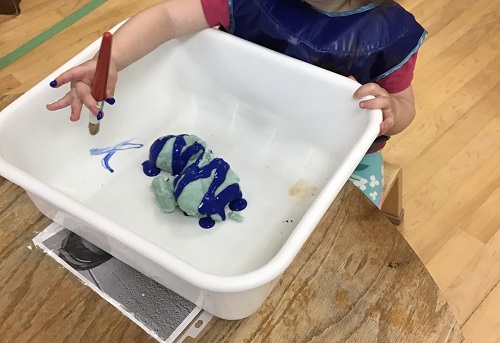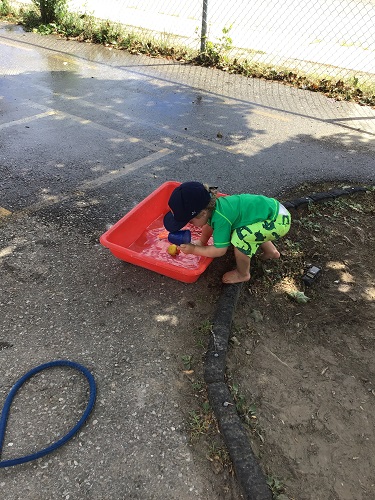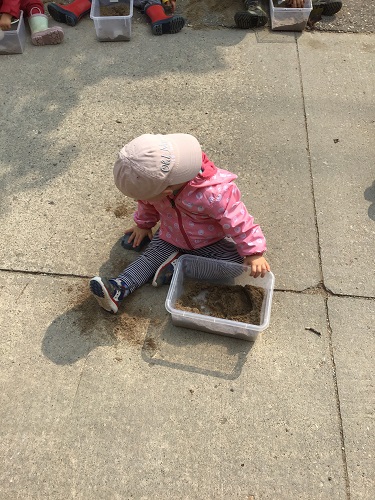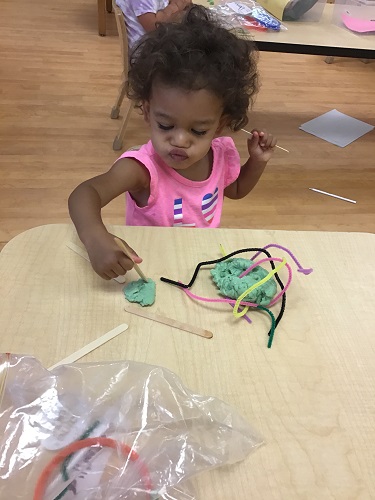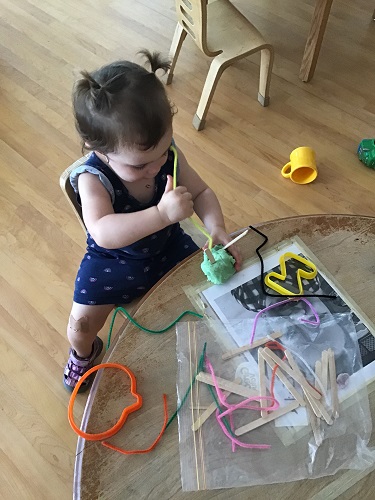Sensory play is vital to a child’s development in many ways: it promotes brain development and allows them to explore the world around them; however with new health and safety protocols we’ve had to get creative with how we implement them into our program. The educators in the toddler room at Our Lady of Fatima put their heads together (socially distanced that is) and came up with various ways in which we could still provide these important activities to our children while continuing to follow our new policies and procedures to keep each child safe and healthy.
When the weather was hot we tracked down empty sensory bins and pools ensuring we had enough for every child to have their own space to play, and than provided them with their own toys to explore. Emilia explored cause and effect as she picked up buckets and scooped and poured water into them, watching as the water splashed back into the pool. Isaac fostered his gross motor strength by use of his upper body and lifted the bucket up, observing how the water would pour over the edge and flow down the playground. It was also wonderful to see some of our toddlers who were a little uncomfortable engaging in water play being splashed by a sprinkler, able to participate in a way which was comfortable for them!
An enhancement of this activity was providing individual bins of water to the children inside, along with a few toys to support their play. Ava quickly decided she wanted to use a mug from the kitchen, picking one up off the shelf and bringing it back to her bucket in order to engage in pretend play with her water. This prompted her peers to choose dishes from the dramatic centre for their water bin as well - some even added babies to their play. Cloths were provided to the children, which was further expanded by Calvin wanting to clean the ride-on cars with his cloth, as he’d observed his educators do many times! This demonstrated how observant the children have been, as well as displayed the connection created between the use of water, cloths and cleaning the toys.
Our toddlers have always loved the sandbox, so we brought the sand to them! Using small labelled bins, we filled them partially with sand and provided small containers, scoops, and shovels and watched as they explored them individually. By having their own materials, space and freedom to play, the children are developing a sense of self, while also creating connections and building relationships with those around them by using the same materials as their peers. This creats a positive sense of well-being and engagement among the children. Layla and Chloe preferred to scoop the sand out of their bins, dump it on the ground and than proceeded to use their hands to smooth the sand around which allowed them to explore various textures. Meanwhile, Lucas and Emily keept the sand in their own bin, scooping the sand into their containers and packed it down to build a tower. The various skill levels demonstrated, allow the children to learn from each other as co-learners and gives the older children the opportunity to develop leadership skills by being role models to our younger toddlers.
Sensory play is also incorporated in our program through playdough. Each child is provided with their own ball of dough, cutters and loose parts such as Popsicle sticks and pipe cleaners. This promotes cognitive development through the use of creativity, imagination, and representational skills as they use the materials to create sculptures! Molding the dough also requires the use of hand muscles which, when strengthened, is a key aspect to developing pre-literacy skills. Emily took the idea of playdough and sensory one step further by requesting to do playdough painting. Through scientific exploration, Emily squished the paint into the play dough, changing it’s colour and texture, and proceeded to stamp the play dough onto the paper to create unique designs. This is an example of how sensory play can support the children to use the scientific method of observation, exploration, and experimentation in their play.
How Does Learning Happen states, “We must always think, feel, and act in ways that reflect the environment, the circumstances, and most importantly the children, families, and colleagues we have before us in every unique situation.” (pg 5). By adapting our sensory activities to suit the new policies and procedures before us, we are ensuring the toddlers can still be fully engaged in their play, create a setting in which they feel they belong to, give them opportunities to express themselves individually, and support a healthy well-being by keeping them safe. I wonder what we’ll come up with next?




